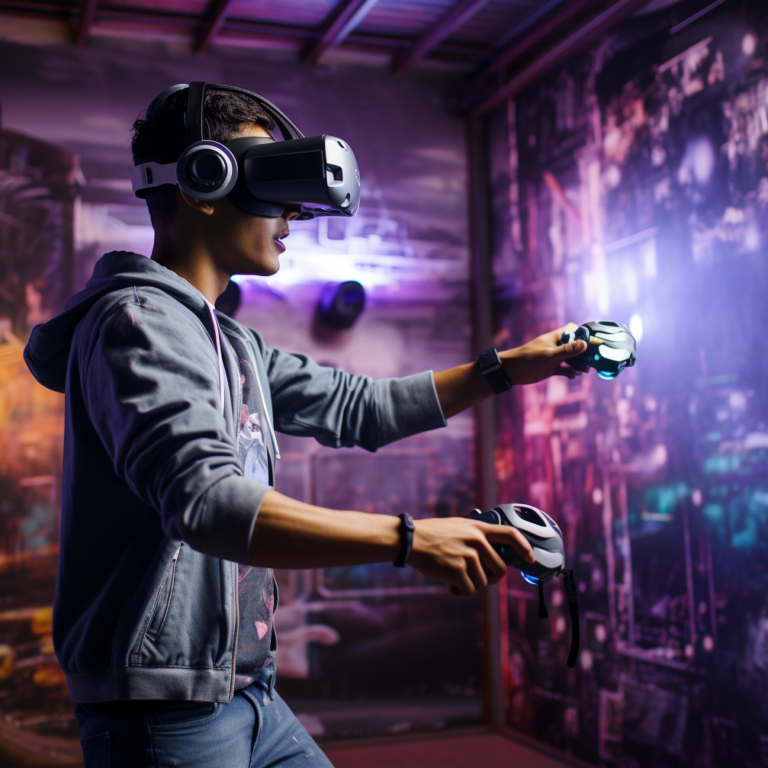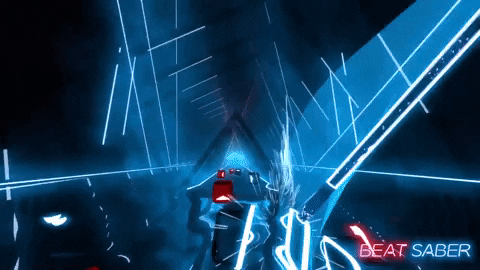Augmented Reality (AR) and Virtual Reality (VR) have emerged as revolutionary technologies that are revolutionizing a variety of sectors in recent years. The gaming business, in particular, is having a significant influence. AR and VR are transforming the way games are developed, played, and experienced, ushering in a new era of immersive entertainment. In this essay, we will look at the deep implications of AR and VR in gaming, as well as a well-known example that demonstrates their transformational potential.
AR/VR: The Game-Changing Technologies
Augmented Reality (AR) augments our experience of reality by overlaying digital material on the actual environment. Users may engage with virtual objects that are seamlessly incorporated into their surroundings by using devices such as smartphones or specialized AR glasses. imaginary Reality (VR), on the other hand, immerses users in totally imaginary worlds using headgear that block out physical surroundings and replace them with computer-generated ones. In recent years, these technologies have improved significantly, providing increasingly realistic and engaging experiences.

The Impact on the Gaming Industry
- Enhanced Immersion: AR and VR technology empower players with unparalleled levels of immersion. Virtual Reality immerses players in a virtual environment, allowing them to explore, interact, and engage with the game world as if they were physically present. Augmented Reality improves immersion by fusing digital aspects with the actual environment, resulting in a seamless integration of the virtual and physical worlds.
- Innovative Gameplay Experiences: AR and VR bring unique gameplay dynamics that push the boundaries of traditional gaming. Virtual reality allows players to physically move, gesture, and control things inside the virtual world, creating a more natural and immersive gaming experience. Augmented Reality, on the other hand, promotes players to explore and engage with their real-world environment, allowing for novel gaming situations that blend virtual material with actual places.
- Multiplayer and Social Interaction: Augmented reality and virtual reality technologies are revolutionizing multiplayer gaming and social interaction. Multiplayer virtual reality experiences allow individuals from all over the world to engage and cooperate in shared virtual settings, generating a sense of presence and camaraderie. Augmented Reality fosters social gaming by allowing users to share gameplay moments and virtual interactions inside their actual environment, resulting in a more engaging and connected gaming community.
- Accessibility and Inclusivity: Augmented reality and virtual reality have the potential to make gaming more accessible and inclusive. Individuals with physical limitations can benefit from virtual reality gaming experiences that allow them to participate in activities that would otherwise be difficult. Furthermore, because they use familiar locations and need less technology, AR games may be enjoyed by a broader audience. These technologies also provide rich and engaging learning experiences in educational gaming.
Examples of AR/VR Game
1. Assassin’s Creed Nexus VR: In this new VR-exclusive adventure, you will play a key part in history. As you climb and parkour around the wide environment, thrust your sword in intense battle. Blend in with the crowd, connect with citizens, and experience the excitement of air assassinations. Abstergo Industries has discovered a technique to recover powerful lost artefacts capable of manipulating people’s opinions. To foil their plot, you’ll unearth fresh stories and take on new missions as famous Assassins. Nexus offers a large selection of historically accurate open maps with 360-degree navigation. Climb and parkour anywhere you choose as you decide how to attain your goals.

2. Pokémon Go: It is one of the most visible examples of AR’s influence on the game industry. This smartphone game grabbed the globe by storm when it was released in 2016, effortlessly integrating the virtual Pokémon environment with the real world. Players might explore their surroundings and meet virtual Pokémon monsters layered on their actual environment by utilizing AR technologies and GPS tracking. As millions of players worldwide embarked on real-world journeys to acquire, train, and battle Pokémon, Pokémon Go demonstrated the potential of augmented reality to create interesting and immersive gaming experiences. The game’s enormous popularity highlighted the public’s need for Augmented-powered gaming and opened the path for future AR advances in the industry.

3. Beat Sabre: It is a Virtual Reality rhythm game developed by Beat Games that blends music, lightsabers, and fast-paced action. Players put on a virtual reality headset and hold virtual lightsabers. When musical beats and notes arrive in the game, players must slice them with precise motions with their lightsabers while keeping time with the music. This game demonstrates the immersive capabilities of Virtual Reality by requiring players to physically move their bodies and arms in order to interact with the virtual world. A thrilling and compelling experience is created by the mix of rhythmic gameplay, aesthetically beautiful visuals, and dynamic soundtrack.




